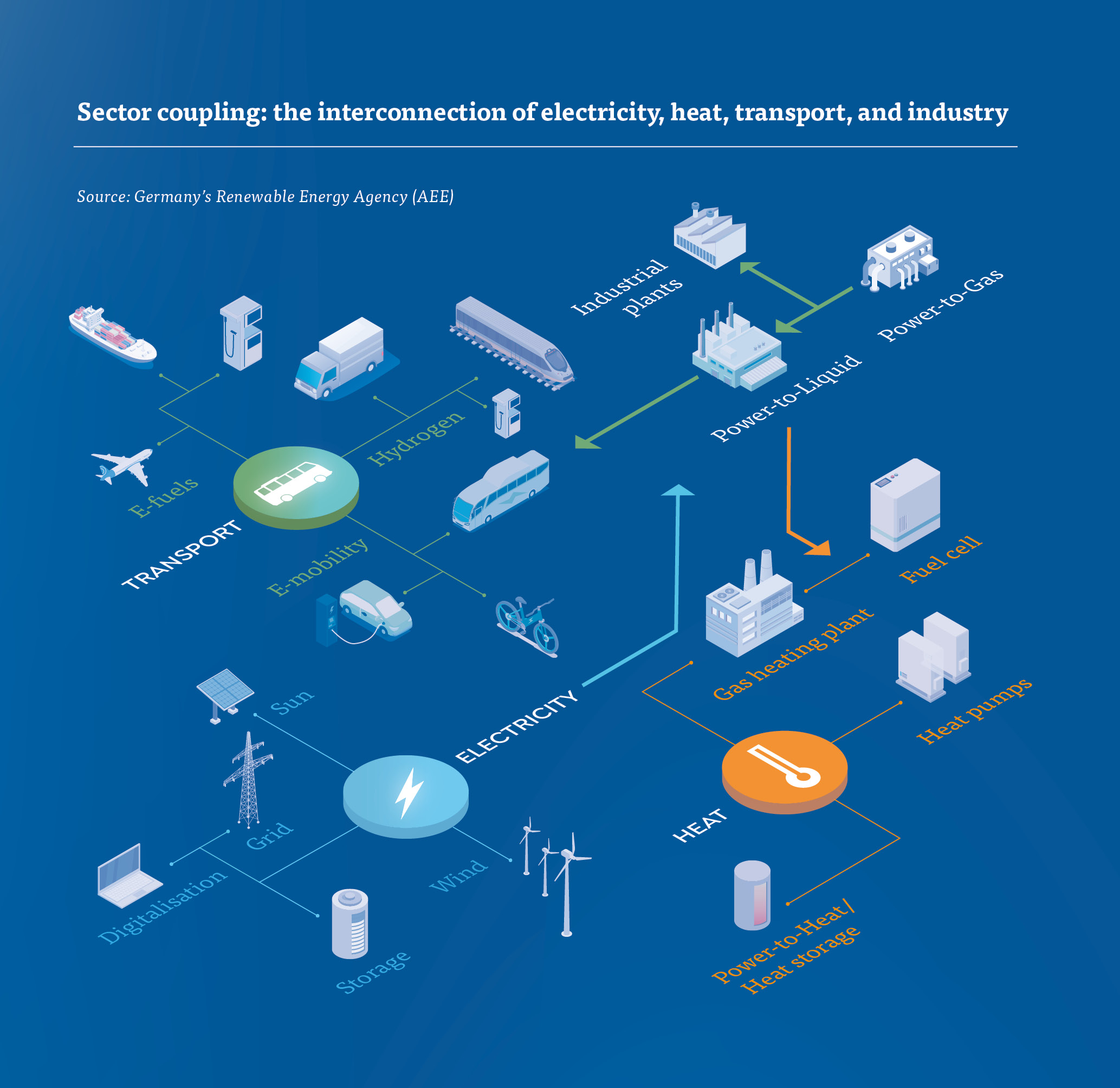Sector coupling is a key approach for integrating renewable energy into various areas such as electricity, heating, transport, and industry. By closely linking these sectors, excess green electricity can be optimally utilised to replace fossil fuels.
Electricity generation from renewable sources like wind and photovoltaics is subject to significant fluctuations due to time and weather conditions. However, even as the share of renewable electricity increases, the balance between generation and consumption on the grid must be maintained. This is achieved through sector coupling, which describes approaches that more closely connect the previously separate energy and economic sectors of electricity, heating, transport, and industry. The goal is to fully harness the potential of electricity generated from wind and solar power for heating, industry, and transport.
“Green electricity will be the oil, coal, and gas of tomorrow – from heating to mobility,” explains Alexander Bonde, Secretary-General of the German Federal Environmental Foundation. “We need to explore new paths with practical innovations, new technologies, and visionary ideas. Sector coupling is the key to a sustainable future.” According to Bonde, the intensive linking of the electricity, heating, transport, and industry sectors is “essential for the success of the energy transition.”
Energy Exchange across Sectors
So far, these fields have formed separate ecosystems to some extent. In sector coupling, however, energy generation, distribution, storage, and consumption are viewed as a holistic system. Within this system, the individual sectors exchange energy with each other so that it is available in the right form – whether as electricity, heat, or “green” gas – wherever it is needed. The production of green hydrogen through electrolysis is one of the key technologies in sector coupling, allowing renewable electricity to be stored and used in industries, transport, buildings, and even for reconversion to electricity.
Standardised Communication
In addition to energy, data will also be a crucial link between the individual industries. This means that sectors must be interconnected not only in terms of performance but also communication. Only by collecting and analysing energy consumption and generation data energy flows can be optimally controlled. Standardised communication protocols within various networks enable the necessary communication, free from system boundaries. Technology standards like Ethernet IEEE 802.3, the Digital Twin standard IDTA, the ODCA for unified direct current technology, and OPC UA for standardised data exchange are already significant enablers of sector coupling.
Secure Data Exchange through a Common Space
Equally important is a shared data space that allows the sovereign and secure exchange of energy data. In a pilot project, the Fraunhofer Institute for Applied Information Technology FIT, together with partners, developed a secure method of data exchange within the energy system. A Gaia-X and IDSA-compliant reference architecture for a German energy data space was developed and implemented.
Prof. Dr. Jens Strüker, one of the project leaders from FIT, highlights the strategic importance of the project for the energy sector: “The next phase of the energy transition has begun. Alongside the expansion of renewable energy, the focus is now on system and market integration of exponentially growing distributed energy resources. Specifically, dynamic electricity tariffs and dynamic grid charges […] will be needed for heat pumps and electric vehicles, among others. Data spaces promise to organise the necessary exchange of consumption data in a data-sovereign and scalable manner.”




